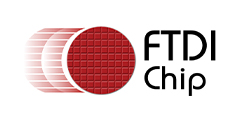When should I choose FT4233HPQ?

Does your design require USB Type-C connectors to be more compatible with the newest laptops and PCs?
Are you currently using FT4232H-56Q / FT4232HQ / FT4232HL original H Series ICs and require increased power higher than the standard 5V/500mA?
Would you like to be able to charge the host PC while accessing the USB data bridges and communication like UART / RS232 / RS485 / RS422, I2C Master, SPI Master and JTAG?
Do you want to eliminate the need for separate power and USB data communication wires or are limited by the number of USB ports?
If the answer to any of the questions above is YES then the FT4233HPQ could be suitable for your next application!
Type-C connectors are now becoming more standard on the latest laptops, PCs, tablets and handhelds.
Note that to exploit all USB Power Delivery features, a USB Type-C to USB Type-C cable is required, otherwise only default 5V/500mA can be sinked from the connected USB Host hardware.
The USB Power Delivery FT4233HPQ IC has two Type-C / PD ports:
-PD1 port supports both power sink and source roles.
This means that it’s capable of getting power from the USB Host hardware or providing the power to charge it! This same port is used for all the data communication through the four unique ports on the device via FTDI’s royalty free drivers.
-PD2 port only supports a power sink role.
A typical use case for this is to get power from a USB PD charger or wall plug, which you can use to power your system and even pass through to charge the USB Host hardware like a laptop or Android tablet.
Both PD ports support 5V3A (15W), 9V3A (27W), 12V3A (36W), 15V3A (45W), 20V3A (60W) PDO profiles, and these profiles are configurable through the external EEPROM at power-up or reset. This is an incredible amount of power compared to the original 5V/500mA (2.5W) offered by products which don’t support USB Power Delivery.
If your application requires even more power, then 20V/5A (100W) is also supported by configuring PD2 as sink only to power your application when attached to a PD charger with 100W type C cable. Please note that this is a special cable with additional electronics inside (not supplied by FTDI). Currently 20V/5A source mode when HP is providing power to support 5A is not currently possible but will be implemented in the future.
Additionally, these two features are available as standard:
-Dual Role Power (DRP)
This is when our device wants to request the role from sink to source to charge laptop for example. This is a seamless feature and one example could be when a USB PD wall charger is plugged in to PD2 which is used to power the USB Host hardware via PD1.
-Power Role Swap (PRS)
This is when laptop (for example) is sourcing power via our device attached to a charger and detects lost power (charger is switched off) and so it sends request to switch from source to sink so that Vbus will be uninterruptible ensuring no power or communication glitches.
The same real world applications are possible with FT4233HP as with the original FT4232H IC with added power options to help future proof your design. However, do note that the connected USB Host hardware (eg laptop, tablet, handheld) must support USB Power Delivery otherwise default USB 2.0 power as sink is only allowed.
These are some example applications but with the addition of USB Power Delivery the application coverage is endless when increased power is required.
-Upgrading Legacy Designs to USB Power Delivery and Type-C
-Field Upgradable USB Products
-USB data transfer modules and interfaces
-Interfacing MCU / PLD / FPGA based designs to USB
-Handheld USB data transfer
-Set Top Boxes
-Data acquisition via USB
-USB Bar Code Readers
-USB Debug interface
-USB Digital Camera Interface
-USB FLASH Card Reader / Writers
-USB Industrial Control
-USB Instrumentation
-USB Smart Card Readers
Here’s an example of FT4233HP being used to charge a Samsung Galaxy Z Fold which supports USB Type-C Dual Role Power (DRP) and Power Role Swap (PRS) while providing a data bridge to 4 unique ports!
The UMFT4233HPEV used here is available directly from FTDI or our authorised distributers which will enable you to test and evaluate our product for your application.
PD2 is connected to a USB Power Delivery charger (plugged into the wall) and FT4233HPQ is configured to pass through this power to PD1 which in turn charges the mobile device.
This is extremely useful as the mobile device only has one Type-C USB Port so without the technology inside FT4233HPQ, it would be impossible to charge the mobile and provide a USB data bridge. This data bridge could be any system or sensor that requires UART / RS232 / RS485 / RS422, I2C Master, SPI Master or JTAG to talk to it. The FTDI UART Terminal application that is available on Google Play Store is able to help this mobile phone which runs on Android OS.
- +1 Like
- Add to Favorites
Recommend
- FT232 USB Bridge ICs, a Powerful Chip with a Complete USB Protocol
- Hi-Speed USB Bridge with enhanced power delivery
- FT602 UVC Class SuperSpeed USB3.1 IC and development modules now available!
- Summary of Chip Encapsulation Type-Is it Used with You?
- Dark tide in the shortage market: chip refurbishment
- The RS3005 Chip Developed by Runic Technology Helped The System MCU to Complete The Power Supply
- Bringing WIFI RF Front-end Chips, Low-noise Amplifiers, 5G Small Base Station RF Chips, CHIPBETTER Announced a Distribution with Sekorm
- More than 250 IC Manufacturers Choose Sekorm as Authorized Distributor, Building Supply Chain Security
This document is provided by Sekorm Platform for VIP exclusive service. The copyright is owned by Sekorm. Without authorization, any medias, websites or individual are not allowed to reprint. When authorizing the reprint, the link of www.sekorm.com must be indicated.















































































































































































































































































































































































































































































































































































































































































































































































































































